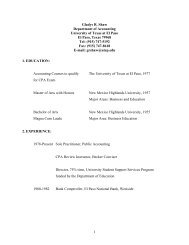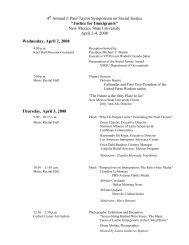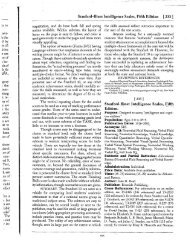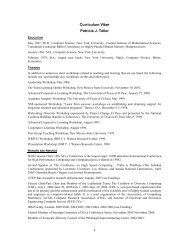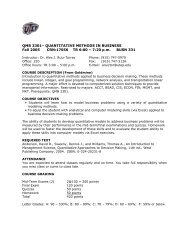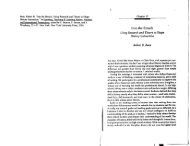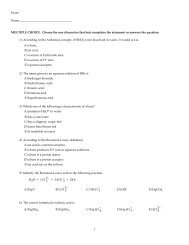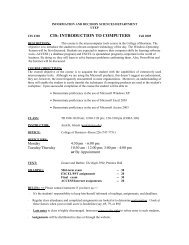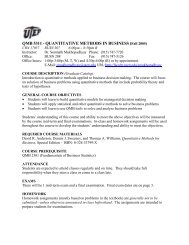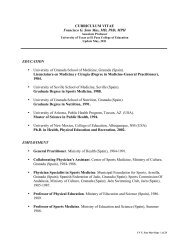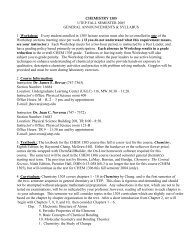Supply & Demand - Faculty.utep.edu
Supply & Demand - Faculty.utep.edu
Supply & Demand - Faculty.utep.edu
Create successful ePaper yourself
Turn your PDF publications into a flip-book with our unique Google optimized e-Paper software.
--_.~Opportunity Costproblem. This grid summarizes a decision to bemade by Jesse, a newspaper carrier, whose dilemma ishow to spend a gift of $50 in the best way possible.Jesse realizes that several alternatives are appealing-a soccer ball, jeans, a portable CD player, several CDs, or concert tickets. At the same time, herealizes that each item has advantages and disadvantages. Some of these items are more durablethan others, and some might require his parents'consent. Some even have additional costs whileothers do not-the CD player would require batteries and the concert tickets would require the use ofhis parents' car.To help with his decision, Jesse draws a grid thatlists his alternatives and several criteria by which tojudge them. Then he evaluates each alternativewith a "yes" or "no." In the end, Jesse chooses thejeans because they satisfy more of his criteria thanany other alternative.Using a decision-making grid is one way to analyze an economic problem. Among other things, itforces you to consider a number of relevant alternatives. For another, it requires you to identify thecriteria used to evaluate the alternatives. Finally, itforces you to evaluate each alternative based on thecriteria you selected.People often think of cost in terms of dollarsand cents. To an economist, however, cost oftenmeans more than the price tag placed on a goodor service. Instead, economists think broadly interms of opportunity cost-the cost of the nextbest alternative use of money, time, or resourceswhen one choice is made rather than another.When Jesse made his choice and decided to purchase the jeans, his opportunity cost was the nextbest choice-the soccer ball or the CD player-thathe gave up.Suppose you spend $5,000 on a used car. Theopportunity cost of the purchase is the value of thestereo, apartment, vacation, or other items andactivities that you could have purchased with themoney spent on the car.Even time has an opportunity cost, althoughyou cannot always put a monetary value on it. Theopportunity cost of taking an economics class, forexample, is the history or math class that you couldnot take at the same time. Thus, part of makingeconomic decisions involves recognizing and evaluating the cost of the alternatives as well as makingchoices from among the alternatives.Alternatives'--Costs $5() r Dur.able?'iwillJesse's Decision-Making GridCriteriaparents I Future expense [ Can useI ~__-+- or less? __ . ----'_L- approve? I unnecessary? I anytime?\1Several CDs __y~_"IConcert ~_icke~syes ~yes __' yes _. noyes no. I _ ~__~-n~CD player. yes =1 yes r 1.-- uP"J--r-nn -- --- --- "I ISocce; ball =--\ yes _~. ;-;- I yes I yes no-Jeans -\ yes --r---- yes , yes -1' yes yesAdapted from A Framework for Teaching Basic EconomICs,Economics America National Council on Economic Education, 1996noyes.,~20 UNIT 1 FUNDAMENTAL ECONOMIC CONCEPTS



